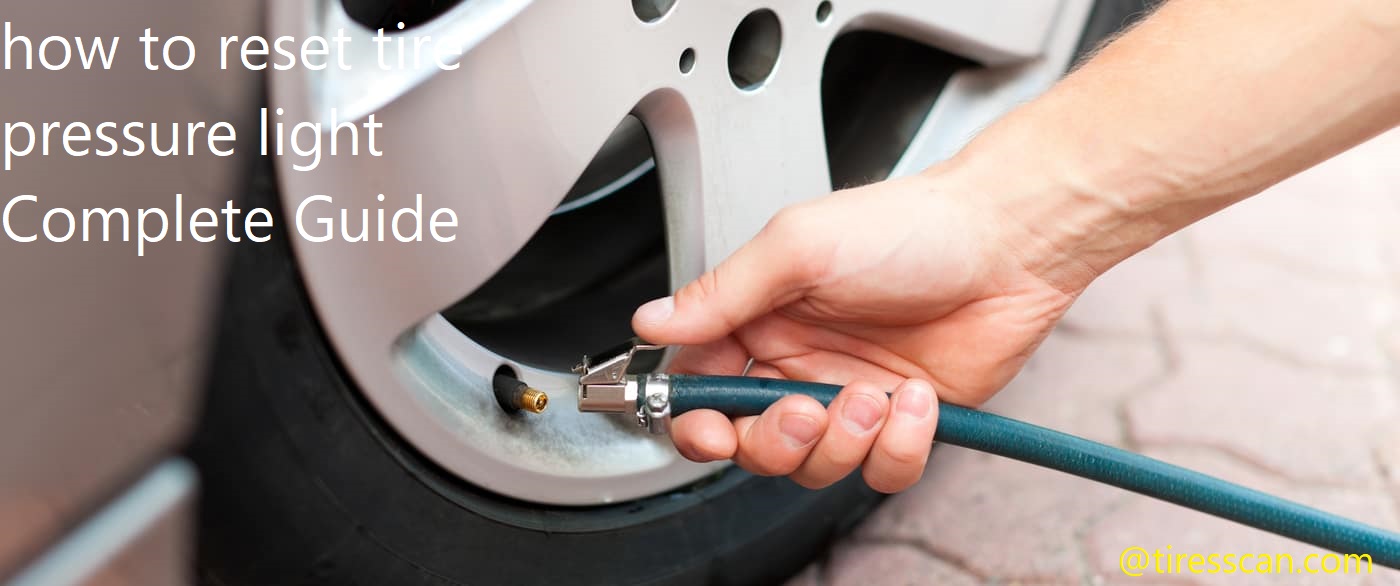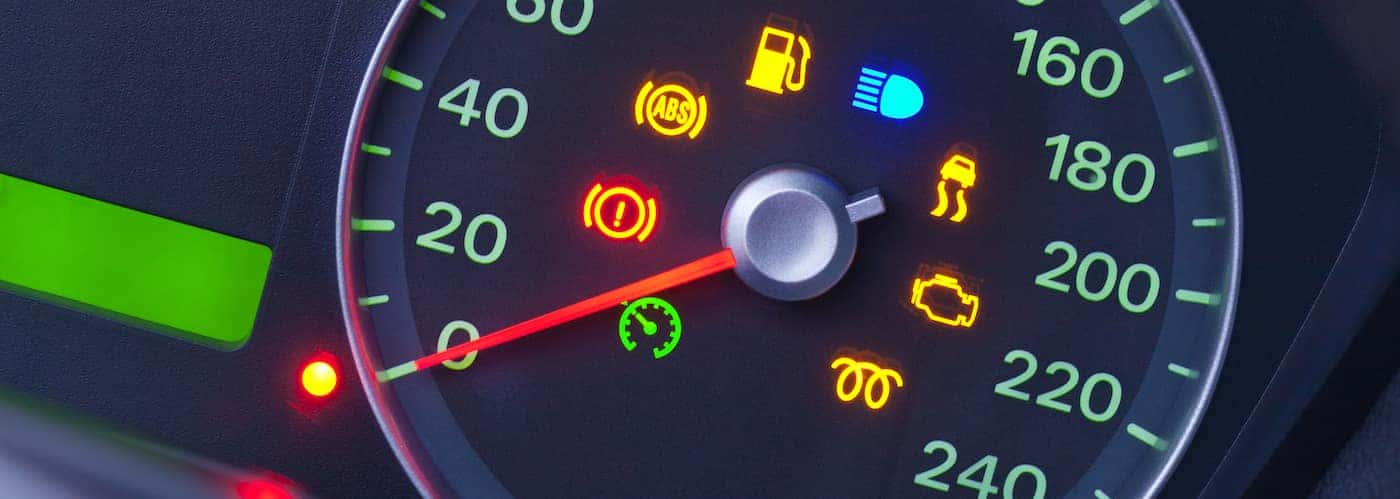Are you dreading the additional cost of another visit to the mechanic? If your tire pressure light has been triggered, then you are in luck!
This guide will teach you how to quickly and easily reset the tire pressure light on your vehicle, saving you time and money. You don’t have to worry about costly visits anymore!
It is important to ensure that the tire pressure light on your car is working properly. If it is not, it could be an indication that there is something wrong with your tires and they may need to be replaced or repaired. It can also cause you to lose fuel efficiency and can lead to an unsafe driving experience.
Fortunately, resetting the tire pressure light on your car isn’t too complicated — all it takes is a few simple steps. In this guide, we’ll explain exactly how you can reset the tire pressure light on your car in no time at all.
Explanation of the tire pressure light and its purpose
The tire pressure light is a crucial warning system designed to notify drivers of low tire pressure. This is important because tires that do not have the correct amount of air can create a number of potential issues, such as blowouts, sluggish acceleration and poor handling. Additionally, a tire with low pressure may cause premature wear to other components on the vehicle, such as bearings and suspension components.
When the tire pressure light illuminates on the dashboard, it’s time to take action and correct the problem. This can either be corrected by manually inflating each individual tire to the specified manufacturer’s recommended level or through the use of a digital inflate/deflate system where you simply input the desired PSI and let it do its job without having to worry about over- or under-inflation. The important thing is to make sure all four tires are inflated correctly in order to maintain proper handling characteristics throughout your drive.

Importance of maintaining proper tire pressure
Tires that are inflated beyond the manufacturer’s recommended pressure can cause a number of serious issues. On the other hand, tires that are underinflated can be equally as dangerous. Both scenarios require that you adjust your tire pressure in order to maintain safe and comfortable driving conditions.
Underinflated tires increase fuel consumption, which leads to higher costs at the pump. In addition, the lack of air pressure will lower a tire’s load-bearing capacity, causing excessive wear on the tread and sidewalls and increase your risk of an accident due to decreased control while driving.
Overinflated tires become harder and more brittle under normal driving conditions, leading to premature wear on both the tire tread and sidewalls. Overinflation also diminishes traction on wet or loose surfaces by reducing the surface area in contact with the road surface. Consequently, unless your vehicle has been properly equipped for off-road use, overinflating your tires is not advised as it leads to decreased tractions and control on most surfaces while driving.
Reasons why the tire pressure light may come on
The tire pressure light may come on for several reasons. It could signal low tire pressure, a damaged valve stem, or loose tire pressure sensor batteries. Here is a more detailed look at each possibility and what to do if the tire pressure light comes on.
Low Tire Pressure: Low tire pressure is the most common cause of the tire pressure warning light coming on. It can occur due to seasonal temperature changes, or when a nail punctures the tire and causes a slow leak. If your tires don’t have enough air in them, the sensors will trigger a warning and the dashboard will show an indicator light for low air pressure. The quickest fix for this problem is to pump up your tires with an air compressor or at a gas station.
Damaged/Non-Functional Valve Stem:Valve stems also often impede proper readings and could be causing your warning light to come on as well. You should check that these components are properly seated onto each wheel before starting your vehicle so they can accurately gauge psi levels.
Loose Batteries: The sensors located in the tires have small batteries inside them which power them in order to send out warnings that indicate any abnormalities in the current psi measurements of your tires. If these batteries become loose over time, they may cause erratic behavior with false readings being sent out where none are actually present – thus causing your dashboard caution to go off erroneously even when there are no problems with air pressure whatsoever! Taking out these batteries then replacing them securely should be all you need in order to get rid of this issue and make sure it doesn’t happen again anytime soon – keeping you safe from any annoying surprise warnings during drives!
Low tire pressure
If the tire pressure light or low tire pressure warning light on your dashboard is lit up, it might mean one of your tires may be significantly underinflated. All cars manufactured after 2007 are equipped with temperature-sensitive Tire Pressure Monitoring Systems (TPMS) that constantly monitors the air pressure in all four tires and triggers the warning light when any tire falls more than 25% below the manufacturer’s recommended pressure. It’s important to reset this warning light as soon as you have filled your tires with the correct amount of air. To reset the tire pressure light, follow these steps:
- Make sure your car is parked on a level surface. This will ensure accuracy when checking and setting your tire pressures
- Consult your vehicle’s manual to determine what is considered a normal air psi for each of its tires
- Use a digital gauge to check each individual tire and fill any underinflated tires up to the manufacturer’s recommended psi
- Often TPMS sensors need to be looked at and/or recalibrated after changes are made. For example, if you rotate or replace one or more tires, the sensors may need to be accessed and set
- If needed, most auto shops can help recalibrate TPMS sensors quickly and easily so that you don’t have any issues when it comes time for resetting
High tire pressure
When your car’s tire pressure monitoring system (TPMS) shows warning signals that the pressure of your tires is too high, it’s important to take measures to reset tire pressure light in a timely fashion. If you don’t, you could damage your car’s tires or cause them to wear out more quickly than they would otherwise. To help maintain the health of your vehicle, here are some tips on how to reset tire pressure light in the event that it appears.
First and foremost, make sure that the tires are actually inflated at excessive levels. Too much air can lead to a greater risk of accidents due to reduced contact with the road surface and increased vulnerability of blowouts or flats. If they’re simply overinflated, you can use an air compressor or air pump at a local garage or service station in order to adjust their pressure level back down. Make sure you’re taking note of manufacturer guidelines as this will vary depending on make and model.
Once you’re sure that all four wheels are properly adjusted according to manufacturer instructions, turn off ignition but leave the keys in the “On” position for five seconds before turning them back off again for two seconds. This should reset tire pressure lights and disengage TPMS from its alert status if it was triggered due to inclement weather or lower air pressures causing fluctuations within its parameters.

Steps to reset tire pressure light
III. Steps to reset tire pressure light
- Check your tires – One of the first steps in resetting your tire pressure light is to check the pressure of your tires. Use a quality tire gauge and adjust accordingly until all four tires are at their recommended psi level. Also, check for any damage that may have occurred on the tires, as this can lead to air leakage.
- Turn off the ignition – To reset the tire pressure warning light, turn off the ignition and allow 10 minutes for the engine and computer to fully shut down. During this time, no adjustments should be made or technology used around or inside of the car as this could disrupt the reset process.
- Turn on the engine – After 10 minutes have passed, you can turn on the vehicle’s engine and check if the Tire Pressure Monitoring System (TPMS) Light has been reset by either turning it off or blinking slowly several times before eventually turning off on its own accord. If not, repeat these steps until it does turn off successfully or consult professional technical help if needed.
Consult vehicle manual
Before attempting to reset the tire pressure light, it is important to ensure that all tires are filled to the proper pressure level. Doing this will help ensure optimum performance, reduce wear on your tires, and increase fuel efficiency. The recommended tire pressure is typically printed on a placard inside of the driver’s door frame or in the vehicle’s owner manual.
If you can’t find these numbers, consult your vehicle’s manual for the correct inflation level for your tires. If any of your tires have significantly less or higher air pressure than what is recommended in your vehicle manual or on the placard inside of the driver’s door frame – fill them up to match what is prescribed in those locations. Take note that different vehicles often have different air pressures for both front and rear tires. Once all of your four tires are at the correct inflation level — you should be able to reset the tire pressure light successfully.
Locate tire pressure reset button
One of the first steps to resetting the tire pressure light is to locate the tire pressure reset button. On most vehicles, this will be located on or around the dashboard or center console, or in some cases, under the driver’s seat. Check your owner’s manual for specific location information about your vehicle’s tire pressure reset button. This button will typically be labeled “reset” or “TPMS” and may be recessed within a plastic covering to protect it from accidental contact.
Once you have identified and located the reset button, you can move on to the next step in resetting your vehicle’s tire pressure light.
Turn on the ignition
Before resetting the tire pressure light, it’s important to ensure that all four tires on your vehicle are correctly inflated to the manufacturer recommended pressure. Once you have checked the pressure for all of your tires, and ensured that they are at the appropriate levels, you can go ahead and begin to reset your tire pressure light.
To begin the process of resetting the tire pressure light, start by turning on the ignition in your car. Make sure that none of the accessories such as air conditioning or radio are switched on; otherwise it will not be a successful reset. Wait a few seconds for any initial warning messages to appear then press and hold down both arrows button located on either side of your instrument cluster simultaneously until a service message appears. Release both buttons and further messages will appear, each with an associated button which needs to be pressed in order to display further menus. Finally, press both buttons again simultaneously until a checkmark appears next to each screen which indicates that your light is now successfully reset.

Conclusion
After resetting the tire pressure light, it is important to evaluate your driving style and habits in order to maintain optimal tire pressure levels. Make sure that you check your tires regularly and adjust the tire pressure according to the manufacturer’s recommendations for ideal performance.
Be sure to check for wear and tear on your tires, as well as any damage from objects that could have punctured them. Taking these steps will help ensure the best possible performance from your vehicle.
FAQs
How do I clear the tire pressure light?
You can clear the tire pressure light by inflating your tires to the recommended pressure and then driving for a few miles. The light should turn off on its own.
Where is the TPMS reset button?
The TPMS reset button is usually located under the steering wheel, near the OBD-II port.
Can I reset my TPMS myself?
Yes, you can reset your TPMS yourself using a TPMS reset tool or by following the instructions in your vehicle’s owner manual.
Why won’t my tire pressure light go off?
If your tire pressure light won’t go off, it could indicate a problem with the TPMS sensor or system. You should have it checked by a mechanic.
How do I reset my TPMS without tool?
You can reset your TPMS without a tool by deflating all your tires, then inflating them to the recommended pressure, and driving for a few miles. The light should turn off on its own.
Why is my tire light on but tires are full?
If your tire light is on but your tires are full, it could be a problem with the TPMS sensor or system. You should have it checked by a mechanic.
Where is the TPMS sensor located?
The TPMS sensor is located inside the tire, attached to the valve stem.
How do I manually activate my TPMS sensor?
You can manually activate your TPMS sensor by using a TPMS activation tool or by following the instructions in your vehicle’s owner manual.
What is the TPMS button?
The TPMS button is a button on your vehicle’s dashboard that allows you to check the status of your TPMS system.
How much does it cost to reset TPMS on car?
The cost to reset TPMS on a car can vary depending on the make and model of your vehicle and the labor costs in your area. It can range from $50 to $200 or more.
See Also:
- Best Tires For Infiniti Q50
- Best Tires For Honda Ridgeline
- Best Tires For Nissan Rogue
- Best Tires For Honda Pilot
- Best Tires For Acura Mdx

